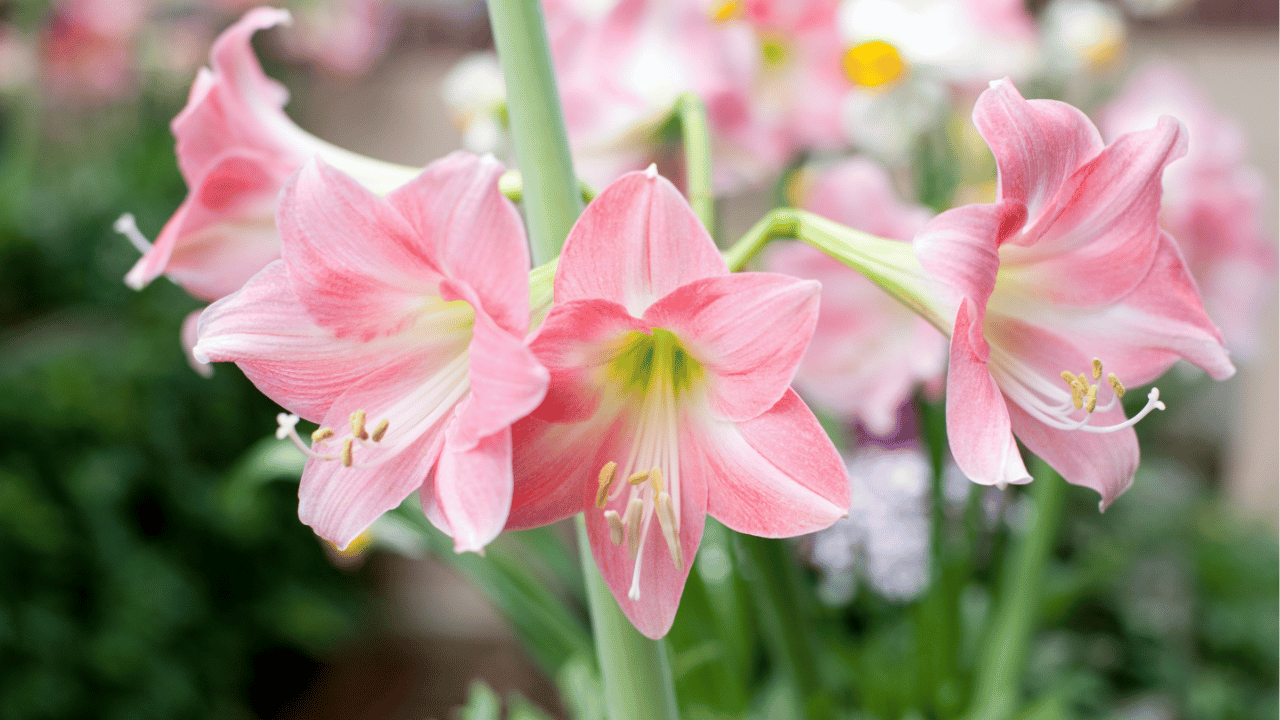Caring for amaryllis plants can be deeply rewarding for gardeners who love vibrant, dramatic blooms. These stunning flowers add a burst of color and elegance to any space, but they do require attention to thrive. Whether you’re coaxing them into bloom indoors or nurturing them in your garden, knowing the nuances of their care will ensure you get the best results from your amaryllis plants.
1. Choose the Right Bulb
Selecting a large, healthy bulb is crucial for growing strong amaryllis plants. The larger the bulb, the more robust your blooms will be. Look for bulbs that are firm and show no signs of mold or damage. Weak or soft bulbs may fail to produce flowers, or worse, rot before they have a chance to grow.
Once you’ve chosen your bulb, be sure to plant it promptly. Amaryllis bulbs are typically sold dormant and can be stored for short periods. However, waiting too long to plant can reduce the bulb’s vigor, leading to weaker growth and fewer blooms.
2. Proper Potting Technique
When potting your amaryllis, choose a container that’s just slightly larger than the bulb itself. Amaryllis prefer a snug fit; pots that are too large encourage excess moisture retention, which can lead to rot. A pot with drainage holes is essential to prevent water from pooling at the base.
Plant the bulb so that the top third remains above the soil line. This helps the bulb breathe and prevents over-watering. Use a well-draining, peat-based potting mix, and gently press it around the bulb to secure it without compacting the soil too much.
3. Watering Frequency
Amaryllis plants are highly sensitive to over-watering. Initially, after planting, water sparingly until you see signs of new growth. Too much moisture at this stage can lead to bulb rot. Once the plant starts sprouting, increase the watering frequency, but always allow the top inch of soil to dry out between waterings.
Consistent watering is important during the growth phase, but once your amaryllis flowers, you can cut back slightly. After blooming, reduce watering as the plant enters its dormant period to allow the bulb to rest.
4. Provide Adequate Light
Light plays a critical role in amaryllis growth and blooming. These plants require bright, indirect sunlight. Place your potted amaryllis near a window that receives ample sunlight, but avoid direct midday sun, which can scorch the leaves and damage the flowers.
If you’re growing amaryllis indoors during the winter months, consider supplementing with grow lights. This will help ensure your plant receives the 10-12 hours of light it needs for optimal growth, especially in darker, cooler climates.
5. Fertilize for Strong Growth
Once your amaryllis begins to sprout, feeding it with a balanced fertilizer will encourage robust growth and plentiful blooms. Use a liquid or slow-release fertilizer high in phosphorus, which promotes flowering. Fertilize every two weeks during the growing season.
After your amaryllis blooms, continue fertilizing monthly until the foliage starts to die back. This strengthens the bulb, preparing it for next season’s blooms. Don’t fertilize during the dormant period, as this can encourage growth at the wrong time.
6. Support Tall Blooms
Amaryllis stems can grow tall—up to two feet in some cases—and often need support. As the flowers begin to develop, they can become top-heavy and prone to tipping over. Insert a stake next to the stem and gently tie the plant to it for extra support.
Choose a stake that’s strong yet slender to avoid damaging the bulb. Bamboo or metal plant stakes work well for this purpose. Tie the stem loosely with soft ties to allow for some movement without restricting growth.
7. Rotate the Pot for Even Growth
Amaryllis plants have a tendency to grow toward the light, which can cause them to lean if not attended to. To keep your plant growing upright and evenly, rotate the pot a quarter turn every few days. This simple habit will encourage the stem to grow straight and distribute light evenly across the plant.
Uneven growth can lead to weaker stems, making it harder for the plant to support its heavy blooms. Rotating the pot ensures balanced exposure to light and helps maintain a healthy, symmetrical plant.
8. Prune After Flowering
Once the amaryllis flowers fade, it’s time to prune. Cut off the spent flowers to prevent seed production, which diverts energy away from the bulb. Leave the flower stalk in place until it turns yellow, as this allows the bulb to absorb nutrients from the stem.
When the stalk has fully withered, cut it back to about an inch above the bulb. Continue to care for the leaves, as they are crucial for replenishing the bulb’s energy. Only remove foliage when it starts to yellow and die naturally.
9. Allow for Dormancy
Amaryllis bulbs need a period of dormancy to rebloom. After the blooming season, reduce watering gradually and allow the foliage to die back. Store the dormant bulb in a cool, dry place for at least 8-10 weeks. This rest period is essential for recharging the bulb.
While dormant, avoid watering or exposing the bulb to light. Once the dormancy period is over, replant or refresh the potting soil, and start watering sparingly again until new growth appears.
10. Replanting and Repotting
Amaryllis bulbs can remain in the same pot for 2-3 years, but they will benefit from repotting after this time. Fresh potting soil replenishes nutrients and provides a better environment for root growth. Repot in the fall, just before the growing season begins, to give your amaryllis the best start.
When repotting, inspect the bulb for signs of rot or damage. Gently clean off any old soil and trim away dead roots. After repotting, water sparingly until new growth emerges, signaling the start of a new blooming cycle.

